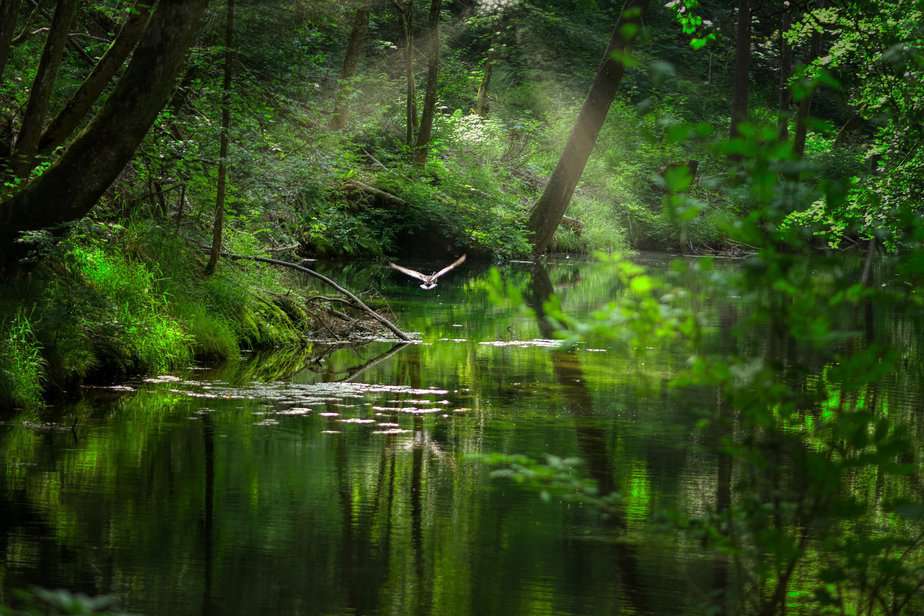
While trees play a vital role in maintaining healthy riparian ecosystems, their proximity to dams can present significant challenges.
Dams are critical infrastructure that serves various purposes, from flood control to electricity generation and water supply. While dams are engineering marvels designed to withstand nature’s forces, there’s an unlikely adversary that can wreak havoc on these structures: trees. In this blog post, we’ll explore the unexpected challenges posed by trees to dams and understand why they are considered problematic.
The Role of Trees in Riparian Ecosystems
Before delving into why trees can be detrimental to dams, it’s essential to appreciate their role in riparian ecosystems. Trees along riverbanks and watersheds provide numerous ecological benefits, such as:
Erosion Control: Tree roots help stabilize soil, preventing erosion and sediment buildup in rivers and streams.
Habitat: Trees provide habitats for wildlife, contributing to biodiversity and ecological balance.
Water Quality: They filter pollutants and impurities from runoff, improving water quality downstream.
Shade: Tree canopies provide shade, which can lower water temperatures and benefit aquatic organisms.
While these benefits are crucial for the environment, they can inadvertently lead to challenges for dams when trees encroach upon their surroundings.
Challenge 1: Root Penetration and Weakening of Dams
One of the primary issues associated with trees near dams is the penetration of their roots into dam structures. Trees seek water, and their roots can extend deep into the ground and expand widely in search of moisture. When these roots reach the dam’s embankment or foundation, they can create tiny cracks and fissures in the structure.
Over time, these cracks can weaken the dam’s integrity, making it more susceptible to leakage or, in extreme cases, failure. The root penetration can also disrupt the compacted soil used in dam construction, potentially compromising its structural stability.
Challenge 2: Debris Accumulation
Trees, particularly deciduous ones, shed leaves, branches, and other organic debris during different seasons. This debris can find its way into the reservoir created by the dam, causing a range of problems:
Clogging Intake Structures: Debris can accumulate in the dam’s intake structures, reducing water flow and impairing the efficiency of hydroelectric turbines or water release systems.
Siltation: Organic debris can contribute to siltation, where fine sediment settles at the bottom of the reservoir. Over time, excessive siltation can reduce the reservoir’s storage capacity.
Algae Blooms: Decomposing organic matter can release nutrients into the water, promoting algae growth. Algae blooms can disrupt the ecological balance and affect water quality.
Challenge 3: Blockage of Spillways
Dams are equipped with spillways to control water flow and prevent overtopping during heavy rains or floods. Trees growing near or within the spillway area can pose a significant risk. When branches, logs, or debris from these trees enter the spillway, they can block it entirely or partially, impeding the controlled release of water.
Blocked spillways can lead to dangerous situations, as the dam may not be able to release excess water efficiently, potentially causing flooding downstream. The blockage can also subject the dam to higher water pressure, increasing the risk of structural damage or failure.
Challenge 4: Unpredictable Uprooting
During severe storms or strong winds, trees growing near dams can be uprooted or damaged, falling into the reservoir or onto the dam itself. This sudden introduction of large woody debris can have disastrous consequences.
The impact of a fallen tree on a dam can cause structural damage, create blockages, and even lead to catastrophic failures in some cases. Therefore, the unpredictable nature of tree-related incidents adds an additional layer of risk to dam safety.
Challenge 5: Costly Maintenance and Management
To mitigate the risks posed by trees near dams, dam operators must engage in regular maintenance and management efforts. These efforts include tree removal, root pruning, and ongoing debris cleanup. The costs associated with these activities can be substantial, impacting the budget allocated for dam maintenance and operation.
Additionally, tree removal and maintenance activities can also have environmental repercussions, as they may disturb riparian habitats and affect the flora and fauna in the surrounding area.
Conclusion: Balancing Conservation and Dam Safety
The issues of root penetration, debris accumulation, spillway blockage, and the risk of falling trees all contribute to potential safety hazards for dam infrastructure.
Balancing the conservation of these ecosystems with the need for dam safety requires careful planning, regular maintenance, and a deep understanding of the potential risks. Strategies such as selective tree removal, root barriers, and debris management can help mitigate these challenges and ensure the continued functionality and safety of dams.
Ultimately, the coexistence of trees and dams requires a delicate balance, where both environmental preservation and infrastructure safety are given due consideration. Finding innovative solutions to these challenges is essential to ensure the sustainable management of these critical water management structures in the future.
More reading
Farm Dam Rehabilitation: Upgrading and Repairing an Existing Dam
